A proposed legislation to end the dispute between the Jacobite and Orthodox factions now threatens to disrupt peace in the state.
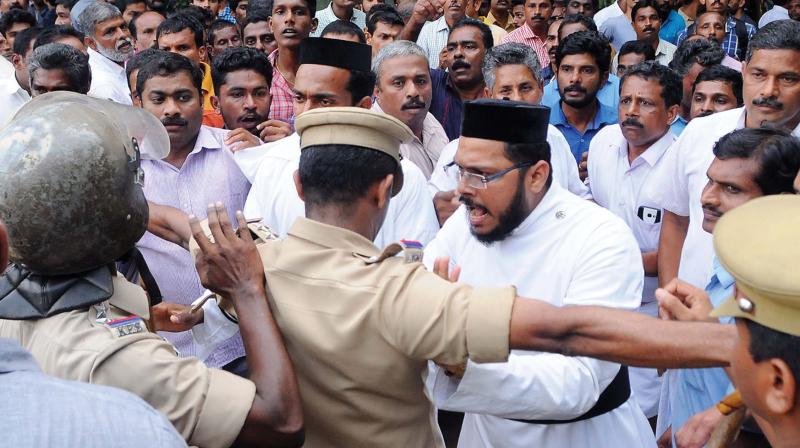
A Jacobite priest argues with the police while implementing the Supreme Court order at a parish on the outskirts of Kochi in 2017. (Supplied)
The Kerala government’s efforts to broker a truce between the warring Jacobite and Orthodox factions of the oriental Malankara Christian Church seem to have run into rough weather.
The Orthodox group has declared that it will not forgo any of the Supreme Court-granted rights and questioned the ruling LDF government’s intentions.
Responding to the government’s announcement that it would enact a legislation to end the over a century-old conflict between the two factions, the Orthodox group called the move a bid to appease the rival Jacobites, who had “succession rights” over the properties of the Malankara Church.
The two groups have been locked in a bitter battle over the right to worship and own the church’s properties.
The Orthodox faction views the government’s move as an attempt to reap electoral gains in the 2024 Lok Sabha polls. It is now preparing to launch a series of protests across the state against the proposed legislation.
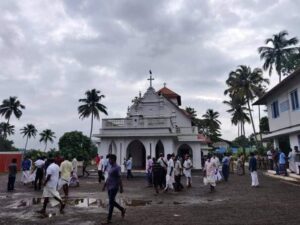
A disputed parish at Kothamangalam in Ernakulam. (Supplied)
The traditionally Congress-leaning Orthodox group had backed the LDF in the 2021 Assembly polls, and the church nominees received plum positions in the government.
The group has warned the government of severe political repercussions if it continued its attempts to take away the rights the faction had gained through protracted legal battles.
The Jacobites, however, are happy with the proposed move, but the government would find the going tough in the face of stiff Orthodox opposition.
The government is also worried over the possibility of the feud spiralling out of control and becoming a law and order issue. Factionalism had turned violent several times in the past.
Meanwhile, the Opposition Congress and the BJP are in wait-and-watch mode, enjoying the sight of the LDF government tying itself up in knots.
When contacted by South First, Kerala’s Industry and Law Minister P Rajeev said the government is giving the finishing touches to the new legislation to promote amity between the warring factions.
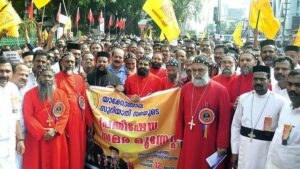
A Jacobites protest in front of the Secretariat in Thiruvananthapuram. (File photo/Supplied)
A commission under retired Supreme Court judge Justice KT Thomas looked into the situation following the Supreme Court verdict had suggested some steps to usher in lasting peace, and the legislation was proposed on the panel’s recommendations, Rajeev explained.
The minister also said that the proposed legislation would be within the ambit of the Supreme Court verdict and would not take away anybody’s rights.
Some LDF leaders told South First that the ruling front is trying for a consensus between the warring factions, even taking the Opposition UDF into confidence.
Following the court order, the Orthodox faction gained the administrative rights in several parishes, and the majority of the laity, belonging to the Jacobite faction, got no permission to worship.
The debate over the new legislation has added fuel to the old stand-offs, and rival factions have started threatening each other by disrupting their prayers and worship in churches.
Orthodox Church secretary Biju Ummen questioned the motive of the government and said that believers under his faction would not accept the Vijayan government’s move to bypass the Supreme Court judgement and enact a legislation.
Speaking to South First, he said protests would be held in all dioceses and the church is planning various agitations, including an indefinite hunger strike in front of the Secretariat in Thiruvananthapuram.
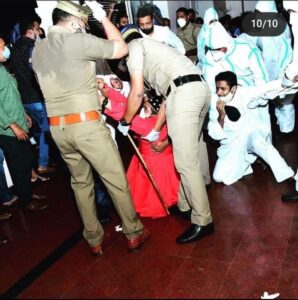
When the church dispute turns into a law and order problem. (File photo/Supplied)
“The Supreme Court has given its final verdict after closely examining all the contentious issues raised by both sides. Then who has the right to weaken that historic judgement by enacting a new law,” Ummen asked.
As per the draft legislation, accessed by South First, administrative control of the disputed parishes will remain with the Orthodox faction.
But, the law will guarantee Jacobites the right to worship in all parishes.
Whenever conflicts over the presence of Jacobites in such parishes occur, district collectors and police superintendents can intervene, and resolve the dispute by holding dialogues with all concerned, the draft Bill has said.
In 2017, the Supreme Court dismissed petitions filed by the Jacobites seeking a review of the verdict given by the same court on 3 July that year, giving the Orthodox group control of more than 1,100 parishes and churches.
Upholding the 1934 constitution of the Malankara Church, the apex court observed that only the Orthodox faction could control the parishes.
The Supreme Court’s earlier verdicts — in 1958 and 1995 — also favoured the Orthodox faction. But Jacobite church leaders say the court order deprived believers of their places of worship.
“Where else can our people go and offer prayers,” asked Bishop Joseph Mar Gregorios, the Synod Secretary of the Jacobite Church, when contacted by South First.
“We welcome the new legislation as it ensures a huge number of devotees the right to worship. How can the Orthodox faction deny us the right to worship? The democratic government must protect the rights of the believers,” he said.
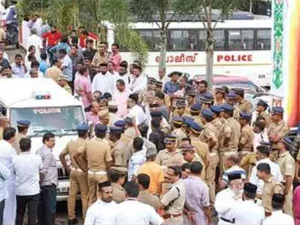
Clash between Jacobite and Orthodox factions in front of a church at Piravom. (File photo/ Supplied)
Following the Supreme Court verdict, the Orthodox faction maintained that there would not be any room for appeal or reconsideration in the case.
On the other hand, Jacobite leaders attempted an out-of-court reconciliation.
The chief minister held repeated talks with the leaders of both factions but failed to clinch a deal with both groups unwilling to compromise.
The Jacobite leaders sought help from Union Home Minister Amit Shah, but that move, too, failed. Later, at the behest of Goa Governor PS Sreedharan Pillai, Prime Minister Narendra Modi intervened, but he too failed.
Going by the versions of the rival factions, the dispute dates back to 1912, and since then, Kerala has witnessed incidents of violence and police action at periodic intervals.
The issue snowballed into a law and order problem when both sides organised protests and hartals and even disrupted vehicular traffic and stopped the funerals of rival members.
The police had to lock more than 300 churches for long following litigation and violence over the right to worship.
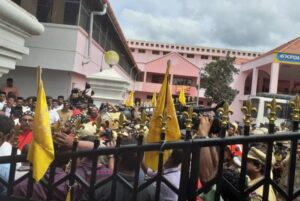
Scene from the disputed church at Piravom. Photo: Supplied
Disputes in the non-Catholic Kerala Church, prominent among oriental orthodox churches, began when the Portuguese missionaries started meddling in its affairs in the 17th century.
Church historians said the missionaries, who arrived in Kerala along with colonial invaders, were intolerant towards local religious practices, and they believed that the liturgy of Christians in Kerala was heretic.
That observation caused widespread resentment in the local community and eventually resulted in the historic Coonan Cross Oath of 1653, which asserted the identity of the Oriental Kerala Church and denounced the Portuguese dominance and intervention.
Believers, who congregated near Fort Kochi, took the oath to disprove the 1599 Synod of Diamper, held in Udayamperoor in Ernakulam, where a section of local church leaders influenced by foreigners asked the laity to follow the Portuguese Catholic rites.
The synod of the Kerala Church issued a decree at the insistence of the Portuguese missionaries, who were hard-core Catholics.
Those who took the Coonan Cross oath also resisted the move to draw them to Catholicism of the Latin rite forcefully.
This group soon entered into a pact with the Syriac Orthodox Church of Antioch in present-day Syria and started acknowledging the patriarch of Antioch as its religious head.
This heralded the formation of the undivided Malankara Church.
Malankara, the new church is the modified version of Maliankara, a coastal village where Christ’s disciple Saint Thomas is believed to have landed in 52 AD.
The new Church ordained Thomas as its first head or Metropolitan. Though the Patriarch of Antioch was chosen as the spiritual head of the Malankara Church, its constitution denied the patriarch any control over the parish churches and their properties.
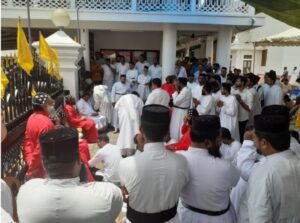
When Jacobite priests organised a protest against taking out of church. Photo: Supplied
Fissures in the church became evident by 1912 over the question of the supreme head.
The disputes began three years before the Patriarch of Antioch excommunicated the Malankara Church Metropolitan for the latter’s refusal to acknowledge his authority.
In 1912, the Metropolitan found a rival patriarch in Antioch and appointed himself as the head of the Church.
He declared the Church a local Kerala one that required no foreigner as its spiritual head — and the Church split into two.
The split led to the formation of the Malankara Orthodox Church headquartered at Devalokam in Kottayam and is headed by the Metropolitan. The Jacobite Syrian Church still retains the Patriarch of Antioch as its spiritual head.
Interestingly, both factions trace their origins to Saint Thomas and share the same liturgy. At the administrative level, they both have different Metropolitans and hold the title of Catholicos.
Despite their bitter tussles over properties, both churches have the same style of worship. Except for the Jacobites recognising the Patriarch of Antioch as its spiritual head, the churches have no differences.
Subsequent court orders confirm that no spiritual matters were involved in the dispute and the fights were over possession of power and money.
The Supreme Court had held the 1934 constitution of the Malankara Church final and binding for managing the parish churches.
The constitution was passed by the Malankara Association, comprising elected representatives of priests and laity from all parishes.
The constitution states that the Malankara Metropolitan is the head of the Church, and the Patriarch of Antioch has no claim on its properties and other assets.
“It was a democratically compiled constitution. There was a representation of all parish churches of that time in the meeting,” Ummen explained.
“The meeting that was held at MD Seminary in Kottayam did not leave out even a single member. That is why the Supreme Court had repeatedly cited the 1934 Constitution as final and binding. It is the Magna Carta of the Malankara Church,” he stated.
“However, the Jacobite leadership claims the association meeting in Kottayam was held without consulting them, who became a separate entity in 1912. They say a parallel meeting of the Malankara Association was simultaneously held at Karingachira in Ernakulam,” Ummen added.
In all its rulings, the Supreme Court advised the factions to function together as they have no differences on spiritual matters. But Jacobites physically resisted whenever the Orthodox faction used favourable court orders to gain control over disputed churches.
The police and revenue officials deputed to implement the court orders were roughed up, or were abused, whenever the factional fights spilled out onto the streets.
Now, both churches are functioning as parallel entities, threatening each other at regular intervals for allegedly meddling in each other’s affairs.
The court orders have facilitated more money to the orthodox faction. In contrast, the cash-strapped Jacobites now have an additional burden: The liability of waging a losing legal battle in different courts.
Jacobite bishops say the question of coexistence would be applicable only after the Orthodox faction accepted the authority of the Patriarch of Antioch.
The legal battle over property aggravated in the 1970s when a special court was set up in Ernakulam to look into the dispute.
The court ruled in favour of the Jacobites, and since then, appeals have been filed in higher courts, including the Supreme Court.
After the Supreme Court’s 2017 verdict, the state government did not take over the Jacobite faction’s churches for fear of reprisal.
The Supreme Court viewed the government’s inaction as contempt of court and threatened to jail the then-chief secretary in 2019, forcing the state to act in favour of the Orthodox faction.
The Jacobites used force to resist the takeover attempts. During state elections, the rival factions raise their demands to bargain with the LDF and UDF, the rival political formations.
Christians constitute 18.4 percent of Kerala’s population. The Jacobite/Orthodox sect is the second-largest Christian denomination after Catholics.
While Catholics form 61 percent of Christians, the Jacobite/Orthodox sect constitutes 16 percent. As per the 2011 census, the total Christian population in the state is 61.4 lakh.
Catholics are 37.4 lakh, followed by 9.8 lakh Jacobite/Orthodox believers. Among them, 4,93,858 belong to the Orthodox Syrian Church, and 4,82,762 others to the Jacobite Syrian Christian Church.
Pathanamthitta, Kozhikode, Ernakulam, and Thiruvananthapuram districts have a larger Orthodox population. Jacobites are in strength in Ernakulam, Kollam, Pathanamthitta, and Kottayam districts.
Ernakulam accounts for more than 25 percent of the Jacobite population in the state. The Malankara Church is a small but ancient denomination among Christians in the world.

Apr 18, 2024

Apr 17, 2024

Apr 17, 2024

Apr 16, 2024

Apr 16, 2024